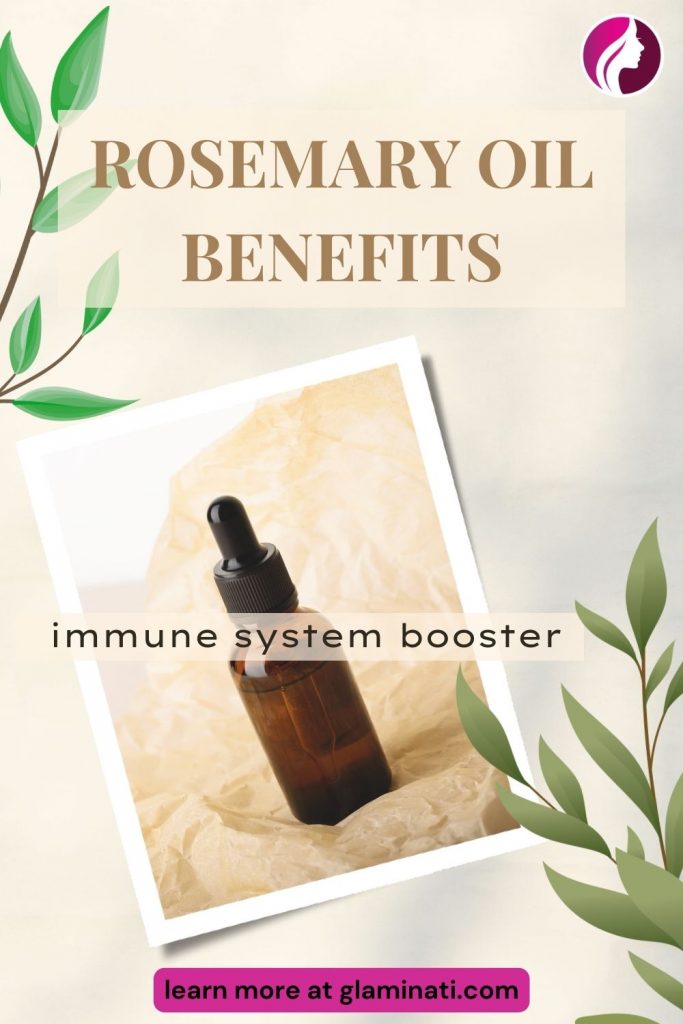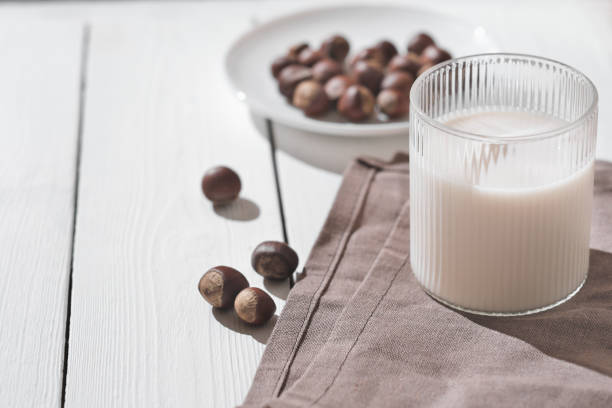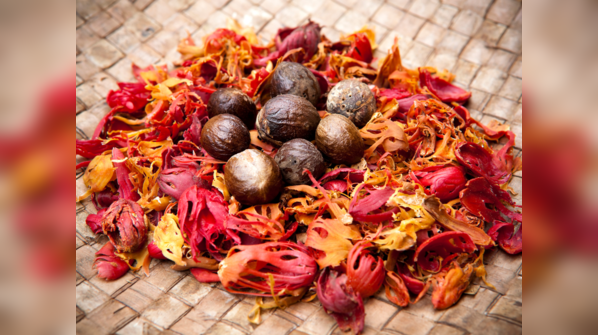Immunity Boost: How Rosemary Keeps Your Defense System Strong – A Timeless Narrative of Resilience
The air is thick with the scent of pine and camphor, a whisper of the Mediterranean breeze carrying secrets centuries old. It’s the fragrance of rosemary, Rosmarinus officinalis, a herb so deeply intertwined with human history that its very name evokes memory and wisdom. For millennia, cultures across the globe have revered this unassuming shrub, weaving it into their culinary traditions, medicinal practices, and even their spiritual rituals. Yet, beneath the aromatic charm and folklore lies a profound scientific truth, a story of biochemical ingenuity that reveals rosemary as not merely a culinary delight, but a formidable guardian of our most vital defense system: immunity.
This is the narrative of how rosemary, a humble evergreen, orchestrates a symphony of protective mechanisms within the human body, transforming from a simple garden plant into a powerful ally in our continuous quest for robust health. It’s a story told through the intricate dance of phytochemicals, the resilience of cellular pathways, and the timeless wisdom of nature, now illuminated by the unforgiving lens of modern science.
Chapter 1: The Scent of Ages – A Historical Overture to Modern Science
Our journey begins in the ancient world, where rosemary was already a star. The Greeks and Romans crowned scholars with rosemary wreaths, believing it enhanced memory and clarity of thought – a foreshadowing of its neuroprotective properties now validated by contemporary research. Physicians like Dioscorides documented its use for digestive ailments, headaches, and as a tonic for general well-being. Across medieval Europe, it became a symbol of remembrance, fidelity, and even protection against plague, often burned as an antiseptic fumigant. These early observations, born of empirical experience and passed down through generations, laid the groundwork for our current understanding of rosemary’s diverse therapeutic potential.
What these ancients intuited, but could not articulate, was the complex interplay of bioactive compounds nestled within rosemary’s needle-like leaves. They sensed its vitality, its cleansing power, its ability to fortify. Today, we stand at a unique intersection where traditional wisdom converges with high-tech analytical methods, allowing us to decode the precise molecular mechanisms by which rosemary exerts its profound effects on human health, particularly its unparalleled capacity to bolster our immune defenses.
Chapter 2: Rosemary’s Chemical Arsenal – A Symphony of Bioactives
To truly appreciate rosemary’s prowess as an immune modulator, we must delve into its chemical composition. It is not one single compound, but a complex tapestry of phytochemicals working in concert, creating a synergistic effect far greater than the sum of its individual parts. This botanical symphony is primarily orchestrated by two major classes of compounds: phenolic acids and diterpenes, complemented by a rich array of volatile oils.
The Phenolic Powerhouse: Rosmarinic Acid
At the forefront of rosemary’s immune-boosting arsenal is rosmarinic acid. This potent phenolic compound is a true antioxidant superstar, renowned for its ability to scavenge free radicals – those unstable molecules that wreak havoc on cellular structures and compromise immune function. Free radicals, generated by metabolic processes, environmental toxins, and even stress, lead to oxidative stress, a state that weakens cellular integrity, impairs immune cell signaling, and contributes to chronic inflammation, thus paving the way for disease.
Rosmarinic acid acts like a vigilant shield, neutralizing these destructive agents and protecting delicate cellular machinery, including DNA and lipids, from damage. But its role extends beyond mere scavenging. It also exhibits remarkable anti-inflammatory properties. It achieves this by inhibiting key pro-inflammatory enzymes and pathways, such as cyclooxygenase-2 (COX-2) and lipoxygenase (LOX), which are central to the production of inflammatory mediators. Furthermore, rosmarinic acid can modulate the activity of Nuclear Factor-kappa B (NF-κB), a master regulator of immune responses and inflammation. By dampening the excessive activation of NF-κB, rosmarinic acid helps prevent the uncontrolled cascade of pro-inflammatory cytokines that can overwhelm the immune system and lead to chronic, low-grade inflammation – a silent saboteur of long-term health.
The Diterpene Defenders: Carnosic Acid and Carnosol
Alongside rosmarinic acid, the diterpenes carnosic acid and carnosol stand as pillars of rosemary’s protective power. These compounds are particularly noteworthy for their unique mechanism of action: the activation of the Nrf2 pathway.
Nrf2 (Nuclear factor erythroid 2-related factor 2) is often hailed as the "master regulator" of our endogenous antioxidant and detoxification systems. When activated, Nrf2 orchestrates the expression of a vast array of protective genes, including those responsible for producing powerful intracellular antioxidants like superoxide dismutase (SOD), catalase, and glutathione S-transferase. These enzymes are far more potent and efficient at neutralizing free radicals and detoxifying harmful substances than any externally supplied antioxidant. By robustly activating Nrf2, carnosic acid and carnosol don’t just supply antioxidants; they empower our cells to produce their own, thereby building a resilient, self-sustaining defense system against oxidative stress and inflammatory damage. This proactive approach is a cornerstone of long-term immune strength.
Beyond Nrf2 activation, carnosic acid and carnosol also exhibit direct anti-inflammatory effects and have been investigated for their potential anti-tumorigenic properties, further highlighting their multifaceted contributions to cellular health and immune surveillance.
The Volatile Elixirs: Cineole, Alpha-Pinene, and Camphene
The characteristic aroma of rosemary comes from its volatile essential oils, a complex blend of monoterpenes and sesquiterpenes. Key among these are 1,8-cineole (eucalyptol), alpha-pinene, and camphene. These compounds contribute significantly to rosemary’s therapeutic profile, especially in the context of immune health.
Alpha-pinene and camphene possess notable anti-inflammatory properties, often acting synergistically with rosmarinic acid and the diterpenes. 1,8-cineole is particularly recognized for its mucolytic and expectorant properties, making it beneficial for respiratory health. A healthy respiratory tract is a critical first line of defense against airborne pathogens. By helping to clear airways and reduce congestion, these volatile oils indirectly support the immune system by reducing the burden on mucosal immunity. Furthermore, many of these volatile compounds exhibit direct antimicrobial activity against a broad spectrum of bacteria, fungi, and even some viruses, adding another layer of defense against invaders.
Chapter 3: The Immune System – A Complex Citadel Under Siege
To understand how rosemary fortifies our defenses, we must first grasp the intricate nature of the immune system itself. It is a vast, interconnected network of cells, tissues, and organs working tirelessly to protect the body from pathogens (bacteria, viruses, fungi, parasites), toxins, and abnormal cells (like cancer cells). This citadel operates on two main fronts: innate immunity and adaptive immunity.
The Innate Front: First Responders
Innate immunity is our body’s immediate, non-specific defense system. It acts as the first line of defense, recognizing general patterns associated with pathogens. Cells like macrophages, neutrophils, and natural killer (NK) cells are the rapid responders, engulfing invaders (phagocytosis), releasing antimicrobial compounds, and initiating inflammatory responses. Rosemary’s compounds support innate immunity through several mechanisms:
- Direct Antimicrobial Action: As mentioned, volatile oils and other compounds can directly inhibit the growth or kill pathogens, reducing the initial microbial load.
- Modulating Inflammation: By preventing excessive inflammation, rosemary ensures that the innate immune response is proportionate and doesn’t cause collateral damage to healthy tissues.
- Enhancing Cellular Function: Antioxidant protection and Nrf2 activation ensure that innate immune cells operate optimally, with less oxidative stress impairing their function.
The Adaptive Front: Precision and Memory
Adaptive immunity is the more specialized, sophisticated arm of the immune system. It "learns" to recognize specific pathogens, mounting a highly targeted attack and developing immunological memory for future encounters. This involves T lymphocytes (T cells) and B lymphocytes (B cells), which produce antibodies. While rosemary doesn’t directly "teach" T or B cells, its profound influence on the immune environment indirectly supports adaptive immunity:
- Reduced Oxidative Stress: By minimizing oxidative damage, rosemary ensures that T and B cells, which are highly metabolically active, can function efficiently and proliferate effectively.
- Balanced Cytokine Production: Rosemary’s anti-inflammatory properties help maintain a balanced cytokine profile. Cytokines are signaling molecules that orchestrate immune responses. An overabundance of pro-inflammatory cytokines can suppress effective adaptive responses, while a balanced environment fosters appropriate T-cell differentiation and antibody production.
- Overall Systemic Health: A body less burdened by chronic inflammation and oxidative stress is better equipped to mount a robust and appropriate adaptive immune response when needed.
The Double-Edged Sword: Inflammation and Oxidative Stress
Central to immune health are the concepts of inflammation and oxidative stress. Both are natural and necessary processes. Acute inflammation is a vital part of healing, bringing immune cells to a site of injury or infection. Oxidative stress, in controlled bursts, plays a role in immune signaling. However, when these processes become chronic and uncontrolled, they become detrimental.
Chronic inflammation is a state of persistent, low-grade immune activation that silently erodes tissues, exhausts immune cells, and contributes to a host of chronic diseases, including autoimmune disorders, cardiovascular disease, and neurodegenerative conditions. It also weakens the immune system’s ability to respond effectively to new threats. Chronic oxidative stress similarly damages cells, impairs cellular communication, and directly suppresses immune function. Rosemary, with its potent anti-inflammatory and antioxidant compounds, acts as a crucial balancer, helping to prevent these beneficial processes from spiraling into destructive forces.
Chapter 4: Rosemary’s Multifaceted Contributions to Immune Resilience
Having laid the groundwork of rosemary’s chemical makeup and the immune system’s complexity, we can now appreciate the profound and multifaceted ways this herb bolsters our defenses.
Direct Antimicrobial Action: Battling the Invaders
One of the most straightforward ways rosemary supports immunity is through its direct ability to combat pathogens. Research has shown that extracts and essential oils of rosemary possess significant antimicrobial activity against a wide range of microorganisms:
- Bacteria: Studies have demonstrated efficacy against common culprits like Staphylococcus aureus (including some antibiotic-resistant strains), Escherichia coli, and Salmonella. This can be particularly beneficial in food preservation and in mitigating gut dysbiosis.
- Viruses: While research is still emerging, some compounds in rosemary, particularly rosmarinic acid, have shown antiviral activity against influenza viruses and herpes simplex virus in in vitro studies. This suggests a potential role in limiting viral replication and severity.
- Fungi: Rosemary also exhibits antifungal properties against yeasts like Candida albicans, which can cause opportunistic infections, especially in immunocompromised individuals.
By directly inhibiting or killing these invaders, rosemary reduces the overall burden on the immune system, allowing it to conserve resources and focus on more complex threats or maintain surveillance.
Modulating Inflammation: Quieting the Storm
As discussed, chronic inflammation is a major deterrent to a strong immune system. Rosemary excels at modulating, rather than completely suppressing, inflammatory responses.
- NF-κB Pathway: Rosmarinic acid, carnosic acid, and carnosol have been shown to inhibit the activation of NF-κB, a protein complex that, when overactive, drives the expression of numerous pro-inflammatory genes. By toning down NF-κB, rosemary prevents the excessive production of inflammatory cytokines like TNF-α, IL-1β, and IL-6, which are implicated in many inflammatory and autoimmune conditions.
- COX-2 and LOX Inhibition: The inhibition of COX-2 and LOX enzymes by rosmarinic acid reduces the production of prostaglandins and leukotrienes, key mediators of pain and inflammation. This targeted action helps alleviate inflammatory symptoms without the broad side effects often associated with pharmaceutical anti-inflammatories.
- Balanced Response: The goal is not to eliminate inflammation entirely, as it’s a vital defense mechanism, but to bring it back into a state of balance. Rosemary’s compounds achieve this by fine-tuning the inflammatory cascade, ensuring an appropriate and controlled response.
Supercharging Antioxidant Defenses: Building the Shield
Beyond directly neutralizing free radicals, rosemary’s most profound contribution to antioxidant defense is its ability to activate the Nrf2 pathway. This is a game-changer for immune resilience.
- Endogenous Antioxidant Enzymes: By upregulating enzymes like SOD, catalase, and glutathione peroxidase, rosemary empowers cells to produce their own formidable internal antioxidant shield. This is a more sustainable and effective strategy than relying solely on dietary antioxidants, as these endogenous enzymes can regenerate and continuously neutralize a wide array of reactive oxygen species.
- Mitochondrial Protection: Oxidative stress significantly damages mitochondria, the powerhouses of our cells. By enhancing antioxidant defenses, rosemary helps protect mitochondrial integrity and function, ensuring that immune cells have the energy they need to perform their demanding tasks, such as phagocytosis, proliferation, and cytokine production.
- Cellular Repair: Reduced oxidative stress also means less DNA damage and protein oxidation, allowing cells to maintain their structural integrity and function optimally, which is critical for the rapid turnover and responsiveness of immune cells.
Stress Reduction and Neuro-Immune Connection: The Mind-Body Link
The immune system is not an isolated entity; it is intimately connected to the nervous and endocrine systems. Chronic stress is a notorious immune suppressor, primarily through the sustained release of cortisol. Rosemary, with its historical reputation for mental clarity and its demonstrable neuroprotective and anxiolytic properties, plays a crucial indirect role in immune health by mitigating stress.
- Cognitive Enhancement: Studies have linked rosemary aroma and extracts to improved memory, focus, and mood. By enhancing cognitive function and reducing mental fatigue, rosemary can indirectly lower psychological stress.
- Anxiolytic Effects: The inhalation of rosemary essential oil, or even the consumption of rosemary extracts, has been shown to reduce cortisol levels and alleviate anxiety. A calmer nervous system translates to lower circulating stress hormones, which in turn frees the immune system from suppression.
- Neuroinflammation: Carnosic acid and carnosol are particularly celebrated for their neuroprotective properties, including reducing neuroinflammation. A healthy, less inflamed brain contributes to a more balanced overall physiological state, supporting immune homeostasis.
This mind-body connection is a critical, often overlooked, aspect of immune resilience. Rosemary, by fostering a sense of calm and mental acuity, helps create an internal environment where the immune system can thrive rather than constantly battle the debilitating effects of chronic stress.
Gut Health: The Immune System’s Headquarters
A growing body of research highlights the gut as the central hub of immune activity, housing 70-80% of the body’s immune cells. A healthy gut microbiome – the vast community of microorganisms residing in our intestines – is paramount for immune development, function, and modulation. Rosemary’s influence on gut health offers another powerful avenue for immune support.
- Modulating Gut Microbiota: Rosemary compounds may exert prebiotic-like effects, selectively promoting the growth of beneficial gut bacteria while inhibiting the proliferation of pathogenic strains. This rebalancing of the microbiome strengthens the gut barrier, reduces inflammation, and enhances the production of short-chain fatty acids (SCFAs) like butyrate, which are crucial for immune cell nourishment and regulation.
- Reducing Gut Inflammation: By leveraging its anti-inflammatory properties, rosemary can help soothe inflammation in the gut lining, a common issue in conditions like leaky gut syndrome. A healthy, intact gut barrier prevents toxins and undigested food particles from entering the bloodstream and triggering systemic immune responses.
- Antimicrobial Against Gut Pathogens: Its direct antimicrobial activity can help keep opportunistic pathogens in check within the gut, further contributing to a balanced microbial ecosystem.
By fostering a healthy gut environment, rosemary indirectly but profoundly strengthens the entire immune system, ensuring that its "headquarters" are operating at peak efficiency.
Chapter 5: From Plant to Plate – Integrating Rosemary into a Resilient Lifestyle
The story of rosemary’s immune-boosting power would be incomplete without guiding principles on how to effectively integrate this ancient ally into modern life. Its versatility allows for various applications, each offering unique benefits.
Culinary Applications: A Delicious Defense
Rosemary is perhaps best known as a culinary herb, and thankfully, its health benefits are readily available through everyday cooking.
- Fresh vs. Dried: Both forms are beneficial, though fresh rosemary tends to have a higher concentration of volatile oils. Dried rosemary, however, often has a higher concentration of phenolic acids like rosmarinic acid.
- Cooking Methods: Incorporate rosemary into marinades for meats, poultry, and vegetables. Its antioxidants can even help reduce the formation of harmful compounds when grilling or high-heat cooking. Roast vegetables (potatoes, carrots, root vegetables) with fresh rosemary sprigs for flavor and immune support. Infuse olive oil with rosemary for dressings or finishing oils.
- Teas and Infusions: A simple rosemary tea can be a soothing and beneficial tonic. Steep a teaspoon of dried rosemary or a small sprig of fresh rosemary in hot water for 5-10 minutes. This is an excellent way to extract water-soluble compounds like rosmarinic acid.
- Synergistic Flavor and Function: Rosemary pairs beautifully with other immune-boosting ingredients like garlic, lemon, and olive oil, creating meals that are not only delicious but also incredibly fortifying.
Herbal Preparations: Targeted Wellness
For more concentrated or specific applications, various herbal preparations can be utilized:
- Essential Oil: Rosemary essential oil, rich in 1,8-cineole and alpha-pinene, can be used in aromatherapy. Inhaling its invigorating scent can help clear respiratory passages, reduce stress, and improve focus, all of which indirectly support immune health. For topical use (e.g., in massage oils for muscle aches or chest rubs for congestion), it must always be heavily diluted in a carrier oil (like jojoba or almond oil) to prevent skin irritation. Crucially, rosemary essential oil should generally NOT be ingested without the guidance of a qualified healthcare professional, as it is highly concentrated and can be toxic in large doses.
- Tinctures and Extracts: These concentrated liquid preparations offer a more potent dose of rosemary’s beneficial compounds. They can be found in health food stores and are often used for specific therapeutic purposes, such as cognitive support or inflammation management. Always follow dosage instructions from reputable manufacturers or a qualified herbalist.
- Hydrosols: Rosemary hydrosol (the aromatic water left over after steam distillation of the essential oil) is much milder and can be used as a facial toner, hair rinse, or gentle room spray, offering some of the volatile compounds in a dilute form.
The Holistic Approach: Beyond the Herb
Ultimately, rosemary is not a magic bullet, but a powerful component of a holistic approach to immune resilience. Its benefits are amplified when integrated into a lifestyle that prioritizes:
- Balanced Nutrition: A diet rich in whole foods, diverse fruits and vegetables, and adequate protein provides the building blocks for a strong immune system.
- Regular Physical Activity: Exercise boosts circulation, reduces stress, and enhances immune cell activity.
- Sufficient Sleep: Quality sleep is crucial for immune repair and regulation.
- Stress Management: Techniques like meditation, mindfulness, and spending time in nature (perhaps even gardening rosemary!) are vital.
- Hydration: Water is essential for all bodily functions, including immune processes.
When rosemary is part of such a comprehensive strategy, its ability to modulate inflammation, supercharge antioxidant defenses, combat pathogens, and support the gut-brain axis truly shines, creating a synergistic effect that elevates overall immune function.
Chapter 6: The Story Concludes – A Timeless Ally in Modern Health
The journey through rosemary’s history, chemistry, and profound impact on the immune system reveals a narrative far richer than mere folklore. From its ancient recognition as a symbol of remembrance to its modern validation as a powerhouse of phytochemicals, rosemary stands as a testament to nature’s enduring wisdom and its profound ability to heal and fortify.
We have witnessed how its rosmarinic acid diligently scavenges free radicals and tames inflammation; how carnosic acid and carnosol awaken our internal antioxidant champions via the Nrf2 pathway; how its volatile oils offer direct antimicrobial defense and respiratory support. We have explored its subtle yet powerful influence on the gut microbiome, its calming embrace on the stressed nervous system, and its overarching role in orchestrating a balanced and resilient immune response.
In an age increasingly characterized by environmental challenges, chronic stress, and the emergence of new pathogens, the quest for a robust defense system is more critical than ever. Rosemary, with its multifaceted approach to immune enhancement – addressing inflammation, oxidative stress, microbial balance, and neuro-immune communication – offers an accessible, natural, and historically validated solution.
This isn’t a story of a quick fix, but of consistent, gentle fortification. It’s a reminder that sometimes, the most potent remedies are found not in laboratories, but in the aromatic leaves of a plant that has quietly guarded human health for millennia. As the scent of rosemary lingers in the air, let it serve as an invitation to embrace this timeless ally, to weave its protective story into the fabric of our daily lives, and to cultivate a defense system as strong and enduring as the evergreen itself. Let the fragrant whispers of Rosmarinus officinalis remind us that true resilience often blossoms from the earth, waiting patiently for us to rediscover its profound narrative of strength.






